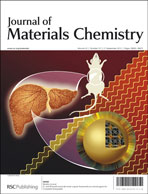Flexible electronics has been an intensively pursued hot topic in recent years, and flexible nonvolatile memory devices (NVMs) are also an important concept in modern electronics due to the advantages of retaining stored information even when not powered, with great portability and high deformability. In this study, we report that δ-K0.5V2O5 bronze with sandwiched potassium atoms in the V–O framework has been found to be a new promising material platform for intriguing nonvolatile memory applications. The bronze structure with the sandwiched alkali metal atoms between the two V2O5 layers ensures the promising NVM effect by changing the electronic properties under an applied electric field. The δ-K0.5V2O5 bronze entangled superlong nanobelt networks, which are established via the “solid–solution–solid” (SSS) mechanism and a hydrogen-bond-assisted entangling process, bring the synergic advantages of excellent mechanical and electrical properties. Spin polarized GGA+U density functional theory calculations elucidate well the nature of bronze-based NVM, in which the overall effect of applying an electric field is to reduce the energy gap, no matter what the direction of the electric field is; the effects of electric field and ion shift would follow the same trend, the non-linear band gap changes would lead to resistance changes of this material. The NVMs based on the entangled superlong nanobelt membrane possess the advantages of not only low cost and very simple device structure, but also a reversible and noticeable nonlinear hysteresis, low consumption, stable WRER cycles, and a long retention time over 1000 s, showing promise for next-generation flexible NVMs.

You have access to this article
 Please wait while we load your content...
Something went wrong. Try again?
Please wait while we load your content...
Something went wrong. Try again?


 Please wait while we load your content...
Please wait while we load your content...